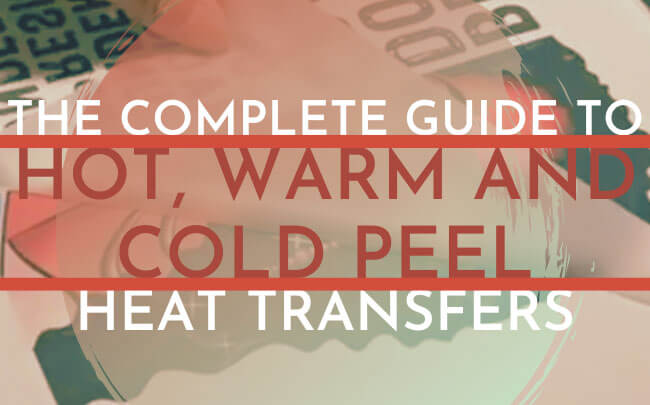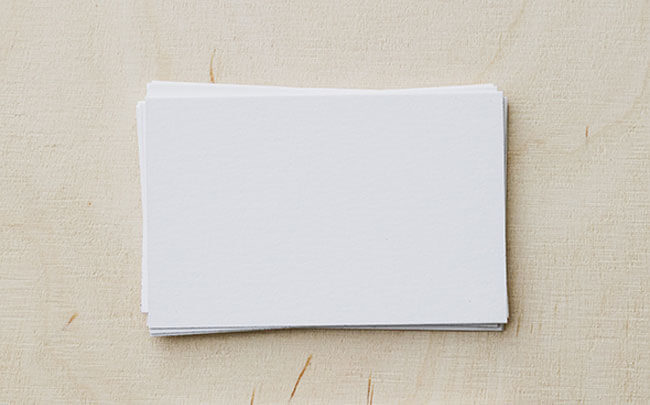
So it’s time. You’ve arrived at that stage of your heat press journey where you have to make yet another decision – which heat transfer paper to go with.
You’ve selected the best heat press money can buy, already have a good printer on hand, and took my advice on how to procure some decent blanks. Things are going great! But not so fast, now you have to decide between hot, warm and cold peel heat transfers.
Industry folks will often tell you about the two main types of peel methods – hot peel and cold peel. And they mean just that, one transfer paper is peeled while still hot, the other is peeled away when things are cooled down. But why do they do this? The reasons are like night and day.
Additionally, there is one more method you don’t hear very often – the warm peel.
In this article, we’ll explore the differences between hot, warm, and cold peel heat transfers, including the materials used, suitable garment and fabrics, and some general tips for successful application. After this, you’ll know which one is suitable for your t-shirt project and you can finally move on with life!
Now let’s get down to it.
Hot peel transfers
As you guys already know, hot peel transfers are peeled immediately after you’ve made a press. This will leave some ink on the transfer paper and some on the fabric, resulting in a “soft hand” print that feels just like a screen print.
The temperature for hot peel transfers can vary depending on the transfer paper and ink being used e.g. inkjet transfers, plastisol transfers, HTV, or sublimation transfers, but it generally ranges from 300-400 degrees Fahrenheit.
Hot peel transfers are generally considered to be the most vibrant and durable, but it can be tricky to work with and requires a bit more care compared to warm or cold peel transfers.
Because it gets up to a high temperature, you need to be careful not to get burned, also hot peeling needs a delicate balance of pressure, temperature, and timing so it does not scorch the fabric to achieve your desired results.
Cold peel transfers

On the other end of the spectrum, you have cold peel transfers. Once the transfer has completely cooled down, typically around room temperature (from 65 to 75 Fahrenheit), peel off the backing paper to reveal a semi-glossy, rubbery print.
Cold peel transfers are often preferred for their ease of use and durability, but the final result may not be as vibrant as a hot peel transfer. Also, because you have to wait for these transfers to cool, the entire process will take longer.
If you are doing athletic clothing like polyester or dri-fit, cold peeling will work best as it requires frequent washing.
And finally, warm peel transfers
Neither here nor there, warm peel transfers represent the middle ground of hot and cold peel transfers. Once the press is completed, grab a piece of clean rag and give the transfer a light rub. I suggest using cotton as it is conductive by nature which means it has good anti-static properties. Rubbing the transfer will disperse heat quicker and lower the temperature.
Warm peel transfers offer the best of both worlds and produce vibrant colors that’s ideal for printing on lightweight fabrics, such as spandex or nylon. It also reduces the risk of melting or scorching the fabric and is durable yet versatile as cold peel transfers.
Which are the best fabrics for hot, warm and cold peel heat transfers?
This is a delicate question as the type of fabric, its color, and the ink being used can impact the choice of peel method. For example, some fabrics like nylon may not withstand the heat required for a hot peel transfer, while others may not adhere well to a cold peel transfer.
In a general sense, hot peel transfers are safest on both light and dark cotton fabric. I’d throw some caution towards polyester and blended fabrics due to their synthetic nature as some of these blends contain plastic particles therefore scorching and melting is a possibility.
On the other hand, cold peel transfers are preferred on dark colored garments. It provides the highest opacity and creates a great look and feel after a press. Cold peel heat transfers (along with warm peel transfers) are great on cotton, polyester, blends with nylon and even ribbed garments.
Is there a difference between hot peel and hot split?
If you thought a hot peel and hot split transfer are the same thing, they are similar in that they are peeled hot. Hot split transfers will leave half the ink on the paper and the other half on the shirt. They are used on white and light garments and have a soft feel to them making them great for cotton-poly blends and tri-blends.
Can you hot peel a cold peel heat transfer and vice versa?

No one says you can’t, but I’d advise against it. Each type of transfer has different adhesiveness and requires specific application procedures. Hot peeling a cold peel transfer will result in a partially transferred image since the ink hasn’t been allowed to set in yet. Similarly, cold peeling a hot peel transfer will likely cause the backing paper to get stuck to the garment.
In any case, use old rags or throwaway garments if you are going to experiment, otherwise it’s best to follow the manufacturer’s instructions for the specific type of transfer.
What can you do if a transfer is not sticking properly to the fabric after washing?
Regardless if you’re using hot, warm and cold peel heat transfers, there are three possibilities that come to mind if the transfer is coming off after a wash. Improper pressure, improper temperature, and incorrect timing. To my knowledge, rarely will you have issues with the peel method unless it is drastically different than what was intended.
If you are sure your peel method is correct then check:
- Pressure – not enough and it can cause the heat transfer not to adhere to the fabric properly
- Temperature – not high enough and it can cause the ink to either not stick or melt
- Time – not enough and a bond between ink and fabric will not be created
How to tell the difference between a hot, warm, and cold peel heat transfers just by looking at it?
The first thing you can check is the backing paper. Hot peel transfer paper will usually have a clear or translucent backing, while cold peel transfer paper will have a white or opaque backing.
If you can’t tell if the transfers look similar, then go ahead and perform a peel test. Press the heat transfer and try all three methods – hot, warm and cold peel – and see which one produces the best image print.
Final thoughts
Overall, the choice between hot, warm and cold peel heat transfers ultimately comes down to personal preference and the specific needs of the project. Some users prefer cold or warm peel transfers for their safety, ease of use and durability, while others prefer hot peel transfers for the speed, vibrancy and hand softness.
It also largely boils down to the type of fabric being printed on and the right heat transfer method. If you are at a crossroads, it’s highly recommended to try experimenting with each peel method to determine the results you like best.
